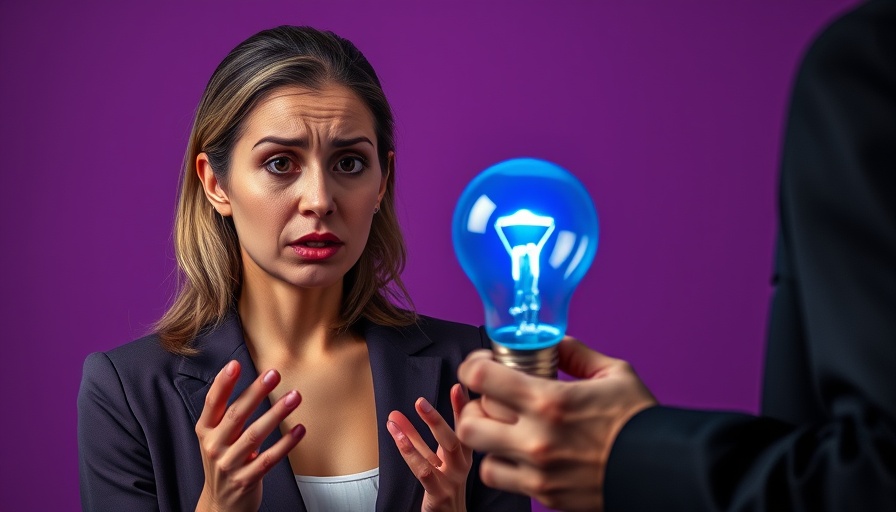
Understanding Blue Light: The Bright But Dangerous Spectrum
In today’s digital age, we often find ourselves basking in artificial light from screens and bulbs. While this light brightens our environment, it carries a hidden danger—blue light toxicity. This phenomenon is more than just a buzzword; it has significant implications for our health that many may still overlook. Here, we unpack the five critical effects of blue light toxicity highlighted by Dr. Janine, offering insights that could change the way you approach daily life.
In "Is Blue Light Toxicity Actually A Thing?", Dr. Janine discusses the profound effects blue light can have on our health, prompting us to further explore this topic.
Blood Sugar Levels: An Unexpected Connection
Did you know that blue light exposure can actually raise your blood sugar levels? A study published in The Lancet reveals that artificial lights, especially after sunset, can lead to disrupted circadian rhythms, which in turn may increase the risk of developing type 2 diabetes. Maintaining a dark environment at night is vital; it allows natural hormonal responses that help keep blood sugar levels in check.
Weight Gain: Finding the Hidden Clue
Next on our list is the surprising link between blue light and weight gain. While many focus on diets and fitness routines, we must consider the effects of artificial lighting. Research indicates that exposure to unnatural light at night can alter not only blood sugar levels but also metabolic processes, leading to unintended weight gain. Who would have thought that those late-night Netflix binges could be contributing to that stubborn weight gain?
Leptin Resistance: Sleep & Hunger Signals
Continuing from our discussion of weight, another consequence of blue light exposure is leptin resistance. Leptin is a hormone that plays a vital role in regulating our appetite and energy balance. Exposure to artificial light at inappropriate times disrupts our body’s natural balance, leading to hunger signals that can increase food intake and further complicate weight management.
The Sleep Dilemma: How Blue Light Messes with Our Rest
If you’ve ever struggled to get a good night’s sleep after scrolling through your smartphone, you’re not alone. Blue light exposure signals to our brain that it’s still daytime, inhibiting melatonin production—the hormone that induces sleep. This leads to restless nights, which over time can undermine our health and wellbeing. To enhance sleep quality, consider implementing a technology curfew and embracing darkness as bedtime approaches.
Cancer Risk: A Serious Wake-Up Call
Perhaps the most alarming revelation is the connection between blue light and cancer risk. Reports indicate that exposure to artificial light at night has been significantly correlated to various cancers, including breast and prostate cancer. Experts suggest that immediate action needs to be taken to limit artificial light exposure in our homes and cities, calling for an awareness that emphasizes the importance of our light environment.
A Holistic Approach: Optimizing Our Light Environment
So, how do we mitigate these risks? The answer lies in adopting healthier habits to align our environment with our natural biorhythms. Here are some biohacking tips to get started:
- Embrace Natural Lighting: Maximize exposure to natural sunlight during the day to maintain a healthy circadian rhythm.
- Limit Screen Time Before Bed: Create a digital sunset by minimizing blue light exposure at least an hour before bedtime.
- Utilize Blue Light Blockers: Consider investing in blue light blocking glasses for evening screen use.
- Create a Sleep-Conducive Environment: Transform your bedroom into a dark, serene space that encourages restful sleep.
The Silver Lining: Positive Steps Forward
While the dangers of blue light exposure are concerning, awareness is the first step towards change. By understanding the implications of blue light toxicity, we can take proactive measures that enhance our longevity and wellness. This aligns beautifully with the broader goal of optimizing health through science-backed insights and practices.
This exploration into blue light toxicity, spurred on by the video, "Is Blue Light Toxicity Actually A Thing?" inspires us to rethink our daily routines. To dive deeper into how lighting affects your health, check out Dr. Janine’s podcast for an insightful discussion on the science behind these phenomena.
 Add Row
Add Row  Add
Add 




Write A Comment